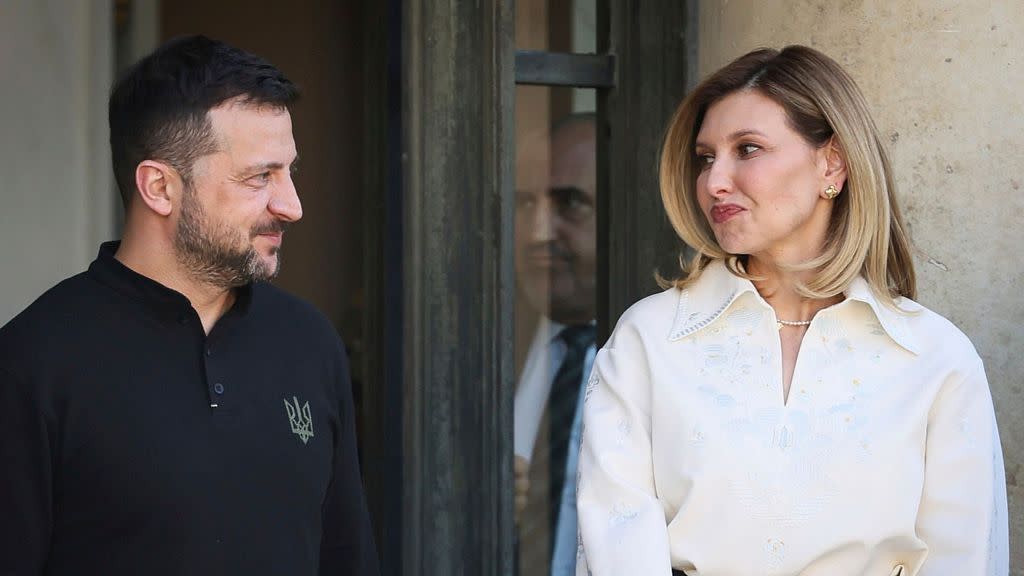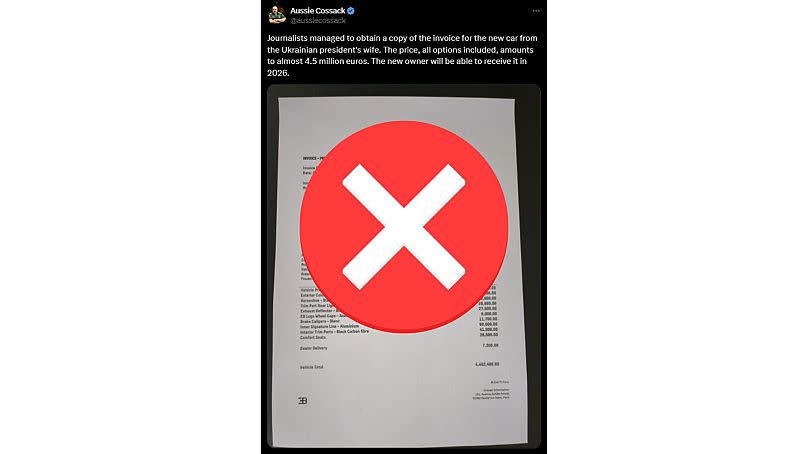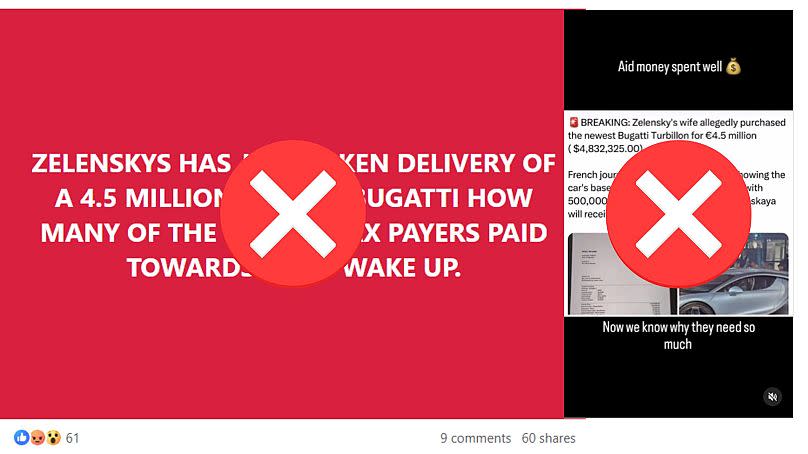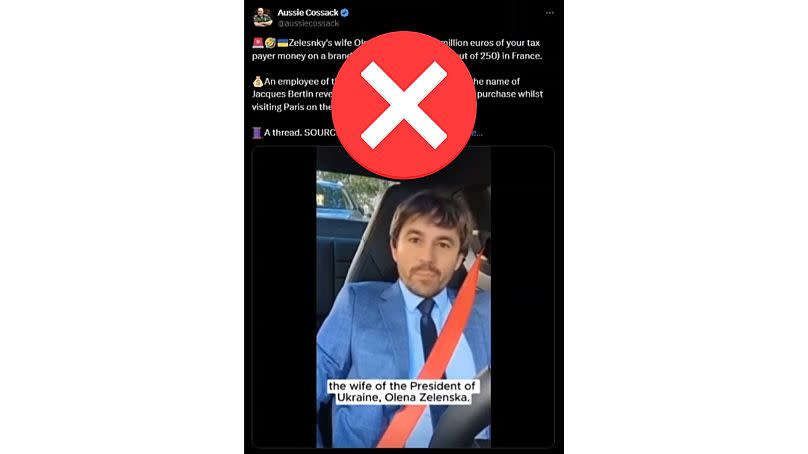Fact-check: Did Zelenskyy’s wife spend €4 million in aid money on a Bugatti?

- Oops!Something went wrong.Please try again later.
As the Russian invasion of Ukraine rages on, so too does Moscow’s disinformation war against its adversaries.
Ukraine’s President Volodymyr Zelenskyy is no stranger to being a target of such false claims, but this time it’s his wife, Olena Zelenska, who’s been caught in the cross-hairs in an apparent effort to discredit international support for their country.
This picture going viral on social media supposedly shows an invoice for a 4.4 million Bugatti bought by the Ukrainian first lady.

The currency isn’t specified, but some posts say it’s in dollars, while others say it’s in euros.
The invoice shows Zelenska’s name and that the car will be delivered to Paris, alongside a production date set for January 2026.
Sometimes, the picture is shared with allegations that the Bugatti has been bought with “American taxpayer dollars”, while other posts online suggest it was “British taxpayers” that paid for it.

Either way, the implication is that Zelenskyy and his wife are misappropriating aid money from the West as they continue to support Ukraine against Russia’s invasion.
But, as the BBC reports, the posts are false and part of a Russian disinformation campaign targeting the US ahead of its presidential election in November.
‘Hidden Truth’
The claim that Zelenska bought the car appeared in various low-profile Russian news outlets online, all of which pointed to a supposedly respectable French website.
Ironically, it’s called Veritée Cachée — or “Hidden Truth” in French.
According to the website, the Zelenskyys had a private showing with Bugatti while in France for the D-Day commemorations in June.
Zelenska allegedly put in an order for a new hypercar yet to go public, which would have made her the owner of one of the first 250 of these cars made, according to Veritée Cachée.
Journalists allegedly obtained the invoice, and the article also supposedly shows a salesman talking about the deal. However, it’s all been made up.

In a statement published on Bugatti Paris’ official Instagram account, the car dealership where Zelenska supposedly bought the car denied both the existence of the transaction and the authenticity of the invoice.
It said there were several issues with it, such as an incorrect price, inaccurate descriptions and old graphics.
The invoice is also missing details such as an order number and seller’s address, which are required for French invoices.
“The Car Lovers Group already took legal action against the above-mentioned facts by filing a criminal complaint for forgery, use of forgeries, usurpation of identity and defamation,” the statement said.
“Once again, the Car Lovers Group firmly denounces this disinformation campaign,” it added.
As for the video of the car dealer talking about the sale, it’s AI-generated. The man in the video does not exist, and his face has been constructed from a stock photo, according to fact-checkers.
Experts say that it can be tricky for the human eye to identify deepfakes, but there can be telltale signs — such as uncanny movements and robotic speech.
Always be on the lookout for Russian disinformation
Russian state-owned media and other outlets with pro-Russian leanings have repeatedly accused the Zelenskyys of siphoning off money and amassing wealth to fund a luxurious lifestyle on the back of Western aid. None of these allegations have turned out to be true.
What the stories do show though is evidence of a massive Russian disinformation campaign designed to influence public opinion in Europe and the wider Western world, to destabilise support for Ukraine and undermine democracy.
Such false stories become all the more prevalent around election time, as was the case in the UK and France last week and as continues to be the case in the run-up to the US election at the end of the year.
It’s not a bad idea to diversify where you get your news from and break out of your echo chamber, but ultimately whenever there’s any doubt, you should always double-check with reliable, impartial sources of news to avoid misinformation.

